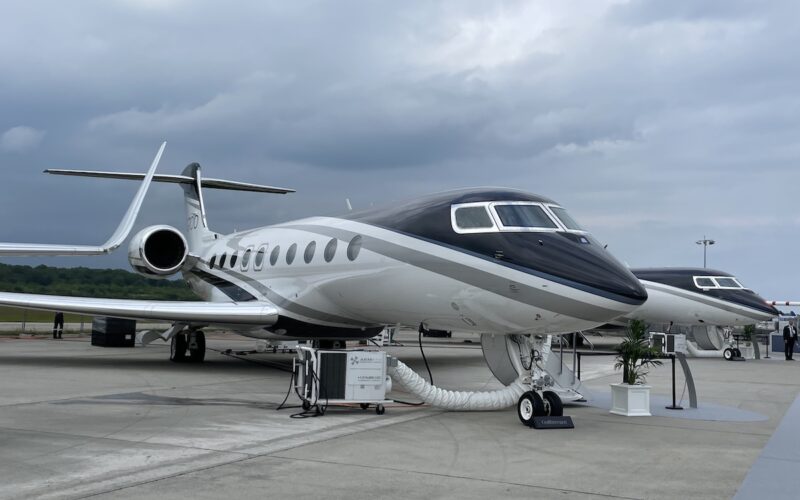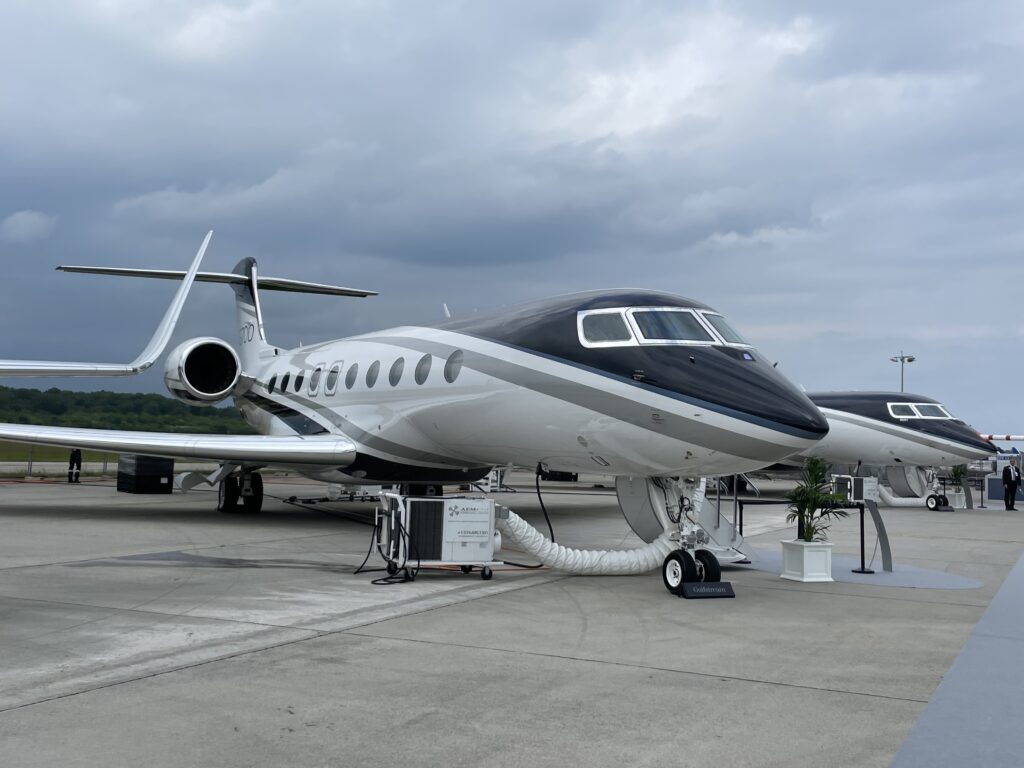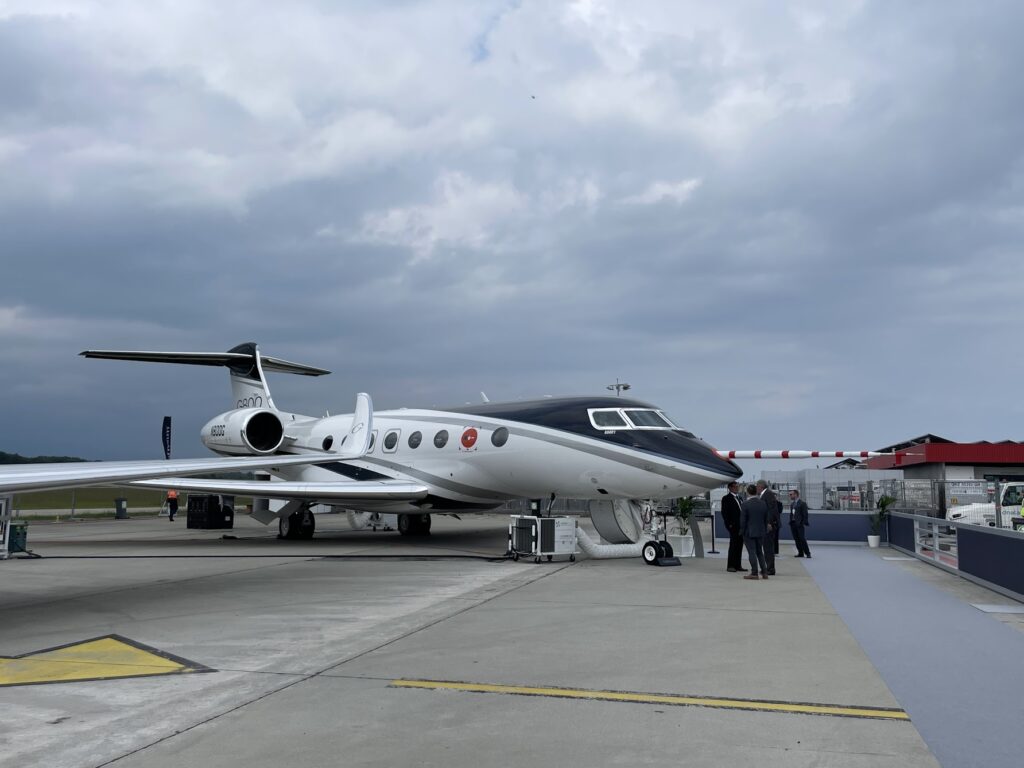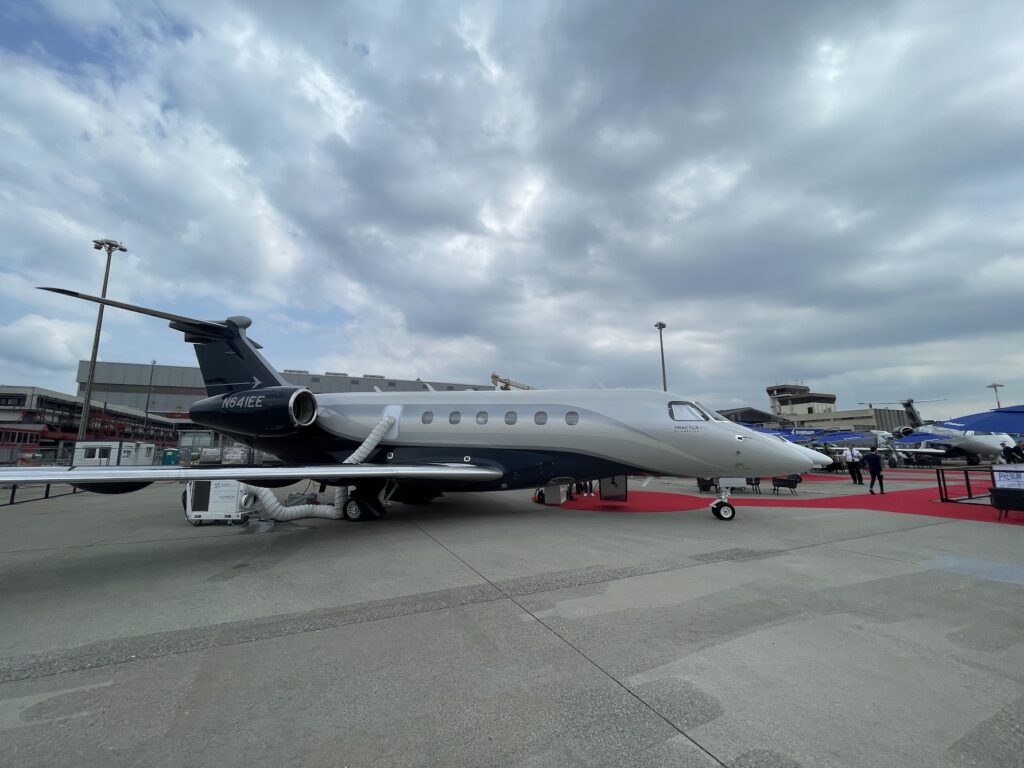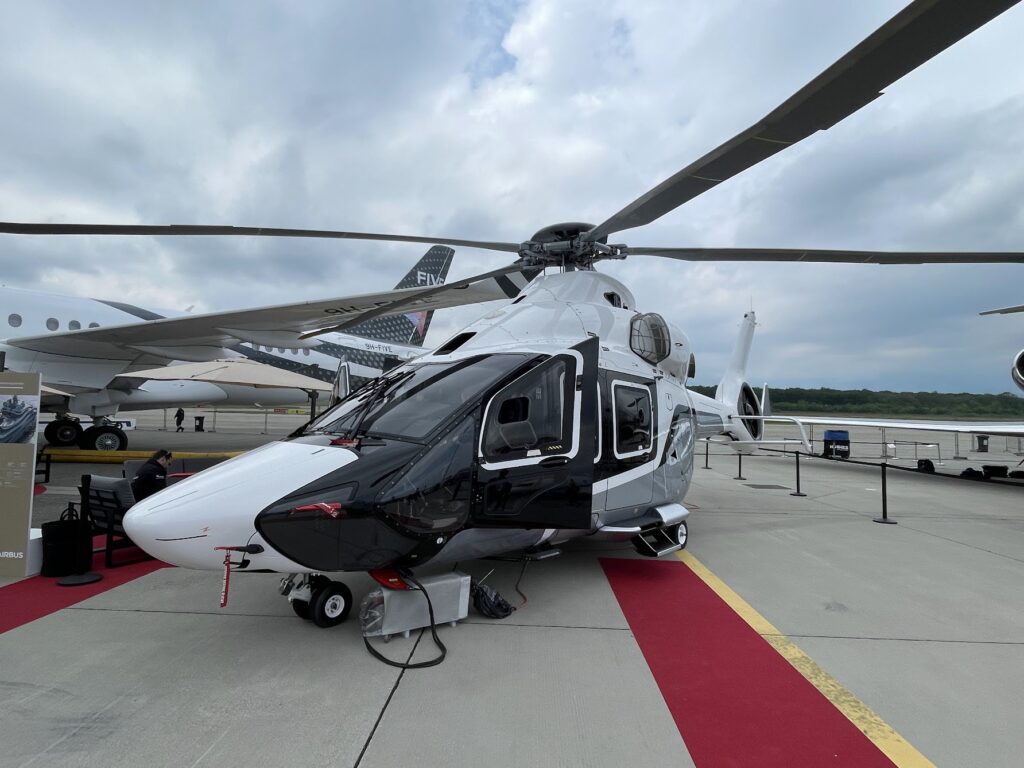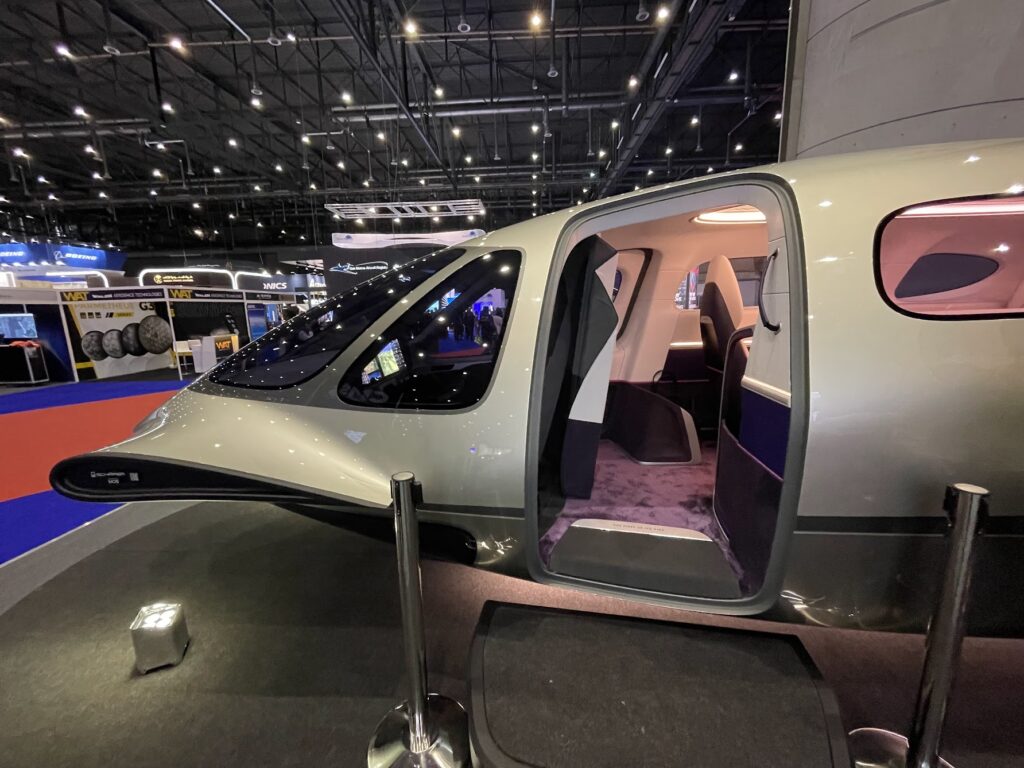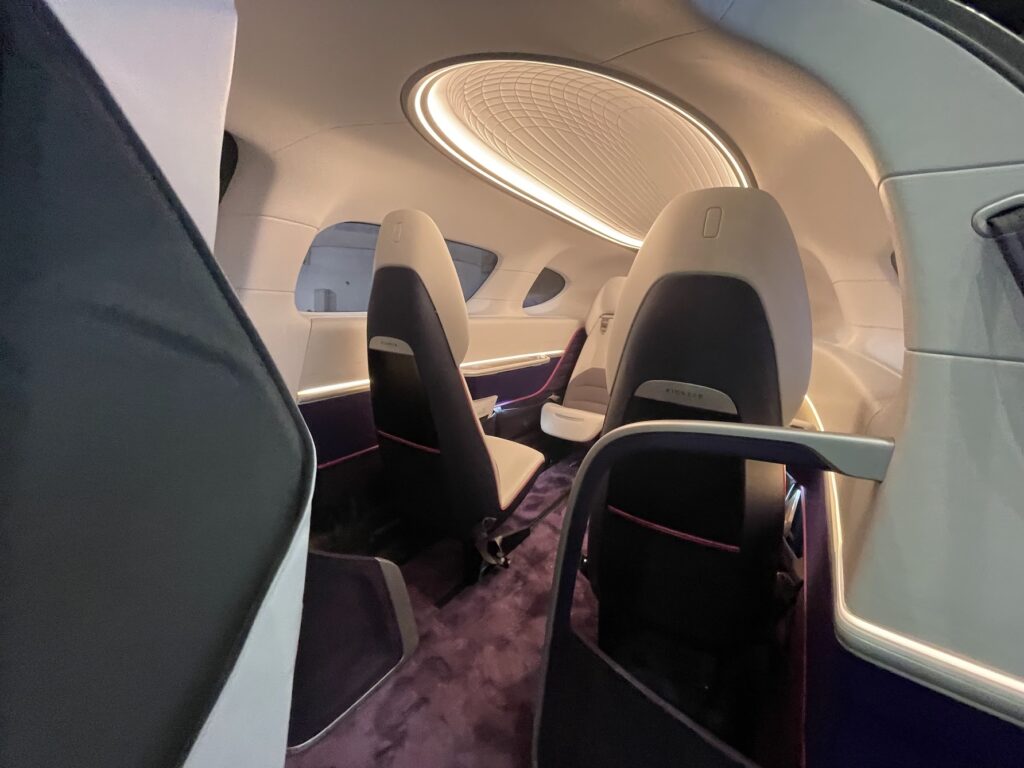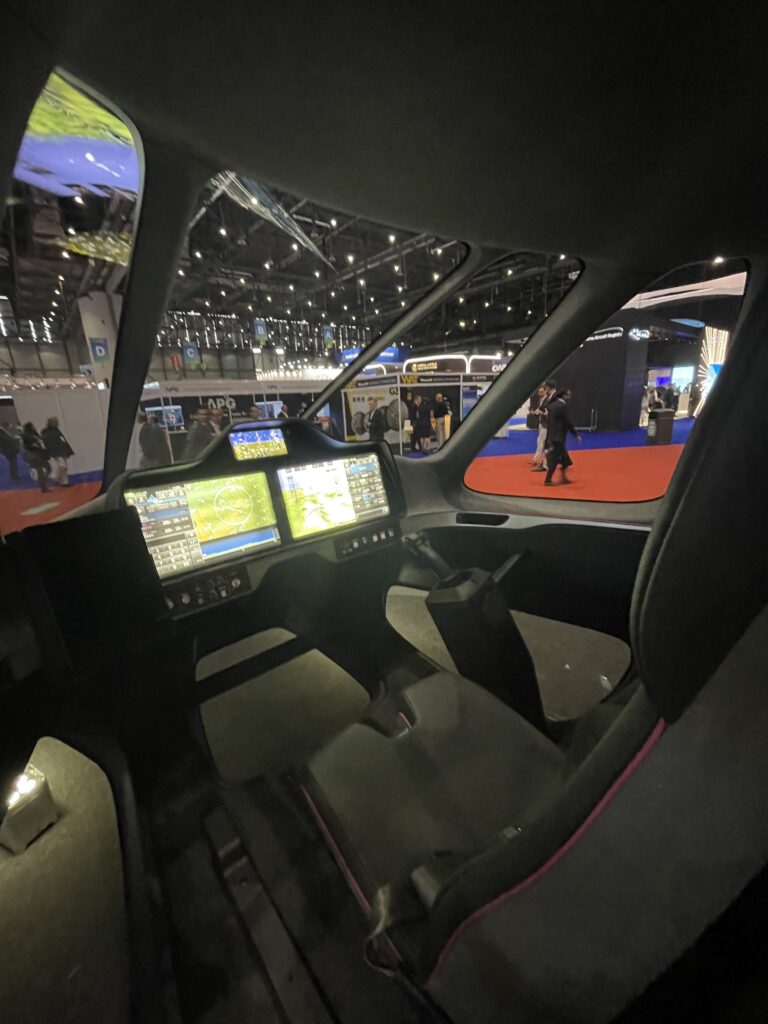From May 23 – 25, 2023. the exhibition area next to Geneva airport became the setting for the largest annual gathering of the executive jet industry in Europe.
EBACE 2023 had all the elements you would expect in an executive jet air show: a static display showcasing the latest novelties the industry has to offer, a good number of sumptuous booths (after all, this is a show where people come to buy and sell airplanes worth tens or even hundreds of millions of dollars), plus a truly packed conference program.
The show had its fair share of ‘firsts’: Textron Aviation, for example, unveiled its new Cessna Citation Ascend, the latest iteration of its best-selling Citation family.
Airbus brought to the show its state-of-the-art ACJ TwoTwenty, the executive version of the A220 airliner, whose first unit was delivered just a few days prior, to the Dubai-based FIVE luxury hospitality group.
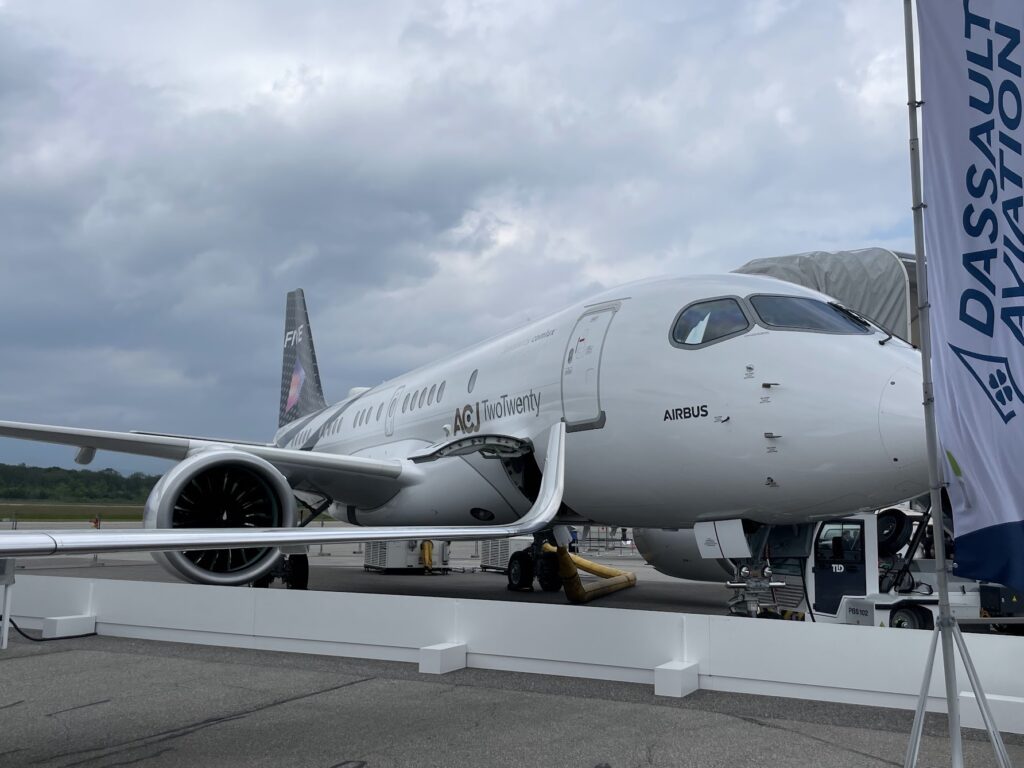
Bombardier and Gulfstream also chose EBACE to present their newest jets to the industry, with the Bombardier Challenger 3500 and the Gulfstream G800 receiving their European première in Geneva. Likewise, in the very light jets category, EBACE marked also the public debut of the new HondaJet Elite II.
AeroTime toured the exhibit and got onboard one of the largest purpose-built executive jets on display at the show, a Gulfstream G700, a long range jet with capacity for up to 19 passengers, which is said to have been acquired, among others, by Elon Musk.
We had the chance to tour the G700’s cabin as well as the cockpit in the company of one of Gulfstream’s pilots that explain some of the features of this aircraft, which first flew in 2020.
Under pressure to go green
However, most conversations at the show had a common denominator: the issue of sustainability.
If the aviation industry at large is in the crosshairs of climate activists, the executive aviation segment is in a particular hard spot, making for a big, fat target in this account.
A stark reminder of this fact came in the form of direct action on the first day of the event by a group of protesters who broke into the static display area and tried to chain themselves to some of the executive jets. This action even prompted the temporary closure of Geneva-Cointrin airport (GVA).
Leaving aside some controversial statements made by senior industry executives, one thing to transpire from this edition of EBACE is that the corporate aviation industry seems to be well aware of the fact it has been put on notice, so to speak, and needs to get its act together when it comes to its environmental footprint.
In view of all this, the corporate aviation industry is betting, precisely, on those traits that may help present itself in a new light.
The smaller size of aircraft and greater operational flexibility, plus the higher disposable income of its users, are all factors that industry executives AeroTime spoke with at EBACE, hope will enable the executive jet industry to play a role in the adoption of new, cleaner technologies.
According to this vision, the executive jet industry would act as an early adopter, a test bank of sorts, for technologies that could later be scaled up to further decarbonize of the rest of the industry.
This is a line that is quite apparent in the messaging and official communications of EBACE organizers, the National Business Aviation Association (NBAA) and the European Business Aviation Association (EBAA). These organizations have taken great care in highlighting the multiple initiatives in place to mitigate the carbon footprint of the event itself, as well as the industry’s commitment to invest in environmental mitigation on an ongoing basis.
For example, the show organizers explained in a press note how they made sure sustainable aviation fuel (SAF) was available at Geneva airport during the week of the event (it sold out) as well as in other airports known to operate EBACE-bound flights, such as Wichita Dwight D. Eisenhower National Airport (ICT), Kansas, which is home to Textron Aviation, and Melbourne Orlando International Airport (MLB), Florida, where Embraer’s executive jet division is based.
Flights departing from other locations could use a book-and-claim scheme through which they paid for certain amounts of SAF and get credited for it, even if they didn’t take physical delivery of the fuel at their airport of departure.
Carbon credits were also used to offset, as well, the emissions from all attendee travel, including ground transportation while in Geneva.
Whether these measures will help assuage the industry’s critics is an open question.
The elephant in the room is that executive aviation, almost by definition, is likely to always have a higher impact per person than other forms of transportation. What’s more, its elitist image may lead to activities like carbon offsetting to be regarded as some sort of indulgence purchasing.
This is why, perhaps a more promising development over the long term is the way the executive aviation industry seems to be finding common ground with the entrepreneurs that are developing the next generation of new zero or low emissions propulsion technologies.
The characteristics of some of the new aircraft being developed, such as small conventional take-off and landing (CTOL) hybrid and electric aircraft for up to 19 passengers or advanced air mobility concepts for urban air mobility make some of these clean sheet designs of interest to executive aviation operators.
This is not only for technological reasons. The operational and business model being pitched for this new generation of aircraft, which often involves the on-demand transportation of small numbers of passengers, has parallels with many of the use cases now common in executive aviation. The smaller costs afforded by electric propulsion should, in principle, make these new modalities of air travel more accessible to the general public, though.
This new wave of startups aiming to develop clean sheet aircraft or propulsion systems was well represented both in the exhibition area as well as in the program of conferences.
French startup VoltAero, for example, announced an investment deal with Japanese group Kawasaki Motors Ltd, as well as an order for 15 of its Cassio hybrid-electric aircraft from Swiss fractional aircraft operator SKY2SHARE.
All-electric aircraft developers ELECTRON Aerospace, from The Netherlands, Munich-based Vaeridion and Swiss-based electric seaplane developer Jekta presented also their respective business cases while participating in several of the panels at the show, as did hypersonic flight startup Destinus, which aims to power their futuristic aircraft concept with liquid hydrogen.
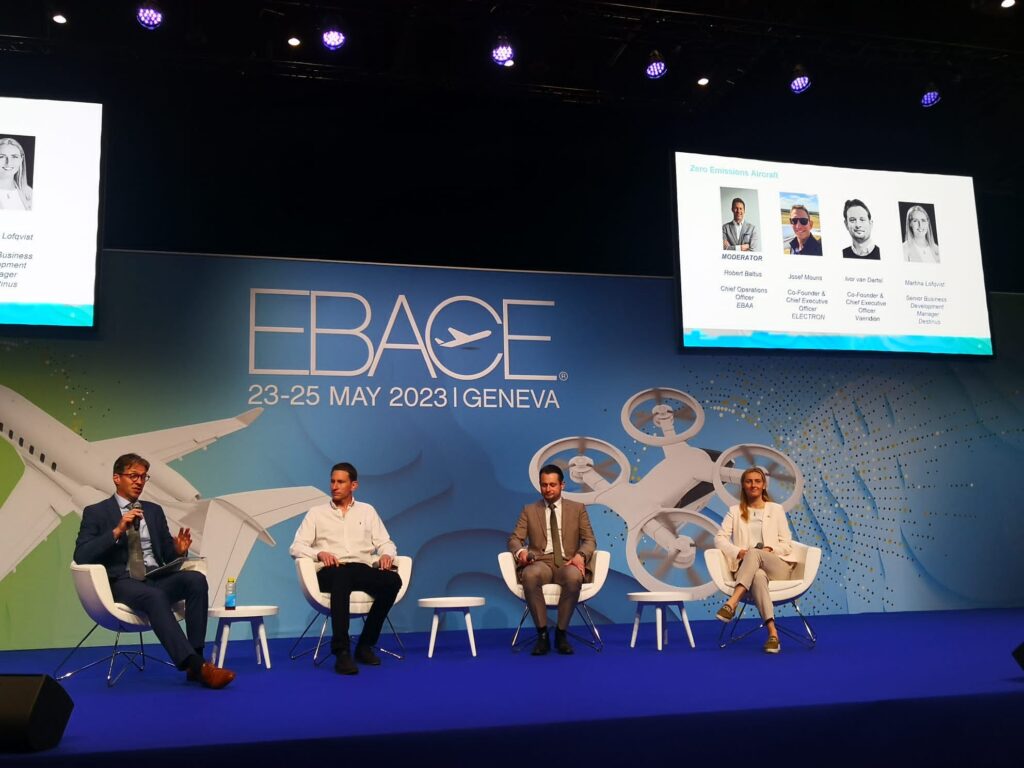
In the advanced air mobility space, one of the stars of this edition of EBACE was Lilium, that displayed a full-scale mock-up, complete with the cockpit and cabin, of the first version of its eVTOL aircraft, called “Pioneer Edition”.
The German eVTOL developer has recently been fundraising in order to extend its (financial) runway until it gets its type certification, which has now been pushed back to no earlier than late 2025.
Lilium also announced new orders at the show from executive aviation operators in Switzerland and the Benelux.
Another pioneering project that was represented at the show, although of a non-commercial nature, is SolarStratos led by Swiss explorer and entrepreneur Raphaël Domjan.
SolarStratos is an experimental battery and solar-powered aircraft capable of flying all the way up to stratosphere. AeroTime had the chance to speak with Domjan to learn some details about this rather unique aeronautical initiative.

